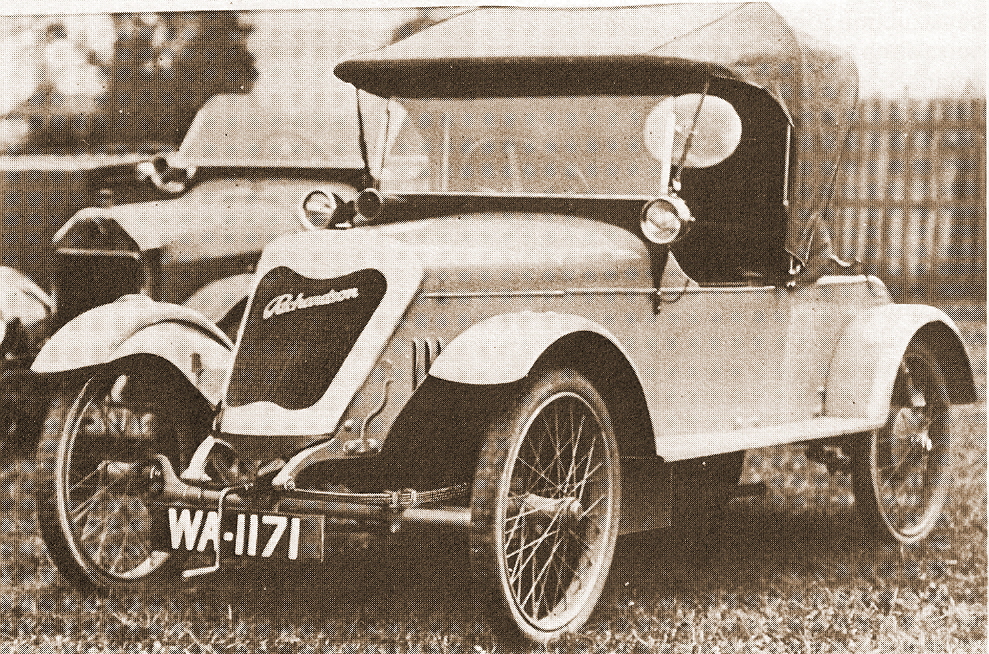Richardson (1919 Cyclecar) on:
[Wikipedia]
[Google]
[Amazon]
''For the pre World war I British Richardson cyclecar made in Lincolnshire see Richardson (1903 cyclecar).''
 The Richardson was a British
The Richardson was a British
 The Richardson was a British
The Richardson was a British cyclecar
A cyclecar was a type of small, lightweight and inexpensive car manufactured in Europe and the United States between 1910 and the early 1920s. The purpose of cyclecars was to fill a gap in the market between the motorcycle and the car. A key ...
manufactured by C. E. Richardson of Finbat Works, Aizlewood Road, Sheffield, between 1919 and 1921.
Before World War I Richardsons had made children's toys and scooters and were pioneer makers of model aircraft. During the war they had switched production to munitions. With peace it was decided to branch out into cyclecar
A cyclecar was a type of small, lightweight and inexpensive car manufactured in Europe and the United States between 1910 and the early 1920s. The purpose of cyclecars was to fill a gap in the market between the motorcycle and the car. A key ...
manufacture and a car was designed by Albert Clarke, the brother-in-law of Charles Richardson.
The car was powered by a V-twin, air-cooled engine with a choice of 980 cc JAP or 1090 cc Precision types. Both power units drove through a friction drive
A friction drive or friction engine is a type of transmission that utilises two wheels in the transmission to transfer power from the engine to the driving wheels. The system is naturally a continuously variable transmission; by moving the two ...
and belt to the rear axle. Later models used a chain drive.
Early cars had an acutely sloped dummy radiator, but this changed to a more stylish vertical design in 1921.
It is thought that around 500 cars were made before production stopped in 1921.
See also
* List of car manufacturers of the United KingdomReferences
{{reflist Defunct companies based in Sheffield Defunct motor vehicle manufacturers of England Cyclecars Cars introduced in 1919